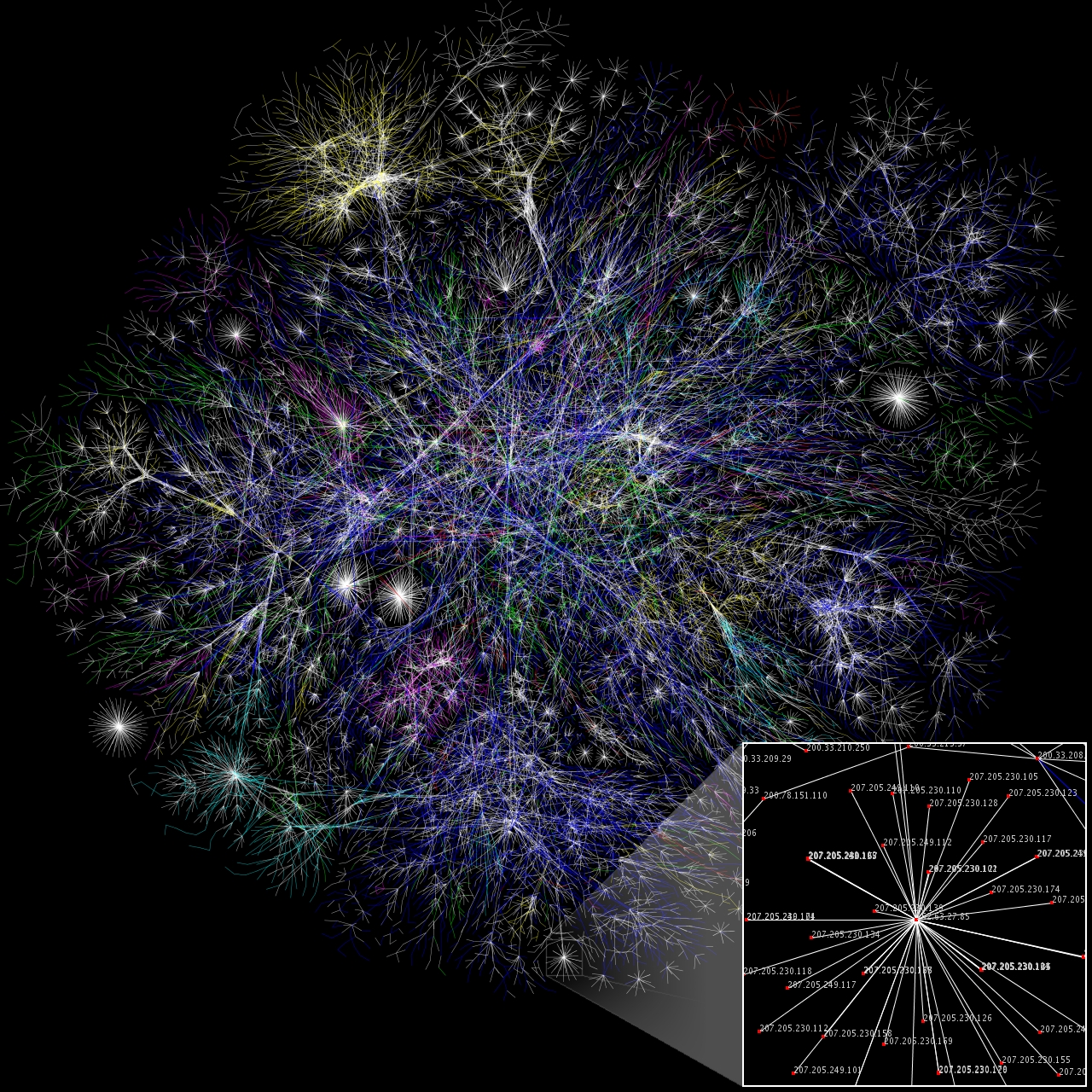Explore web search results related to this domain and discover relevant information.

Learn everything you need to know about computer networking basics if you’re interested in pursuing an IT or networking career.
Computer networking is often an essential skill for many IT professionals, like network engineers, systems administrators and network technicians. There are many industry terms, aspects and elements of computer networking, and your depth of technical knowledge might help you secure an interview or offer during a job search.Knowing more about industry basics and what they mean can also help you determine if IT is a career field you want to explore. In this article, we discuss what computer networking is and explore explanations of 9 various networking basics to help you build a foundation of your technical understanding.Related: Everything You Need To Know About Computer NetworkingMany consumer devices communicate with each other, like doorbells and locks, thermostats, refrigerators and audio and visual systems, and IT professionals use computer networking to ensure these devices function well, properly share information and facilitate communication.Related: A Beginner's Guide to Information TechnologyA switch is essential to computer networking. It serves as a controller, helping connect all your devices to a network in a home, office, building or area like computers, servers, printers and wireless devices. Switches communicate with each other and with other networks, which is helpful when you want to share resources and material.
Read the latest articles of Computer Networks at ScienceDirect.com, Elsevier’s leading platform of peer-reviewed scholarly literature
Computer Networks is an international, archival journal providing a publication vehicle for complete coverage of all topics of interest to those involved in the computer communications networking area. The audience includes researchers, managers and operators of networks as well as designers and implementors.This may include articles describing discrete-event or other simulators, emulation tools, software implementations of networking and communication functionalities and protocols, standard implementations, monitoring tools, among others. The International Journal of Computer and Telecommunications NetworkingDataset Articles. Computer Networks also publishes micro-articles that describe open datasets available in a redacted and organized way.Open-Source Software Articles. Computer Networks additionally publishes micro-articles that describe open source software that has been used to obtain scholarly results in the area of computer networks.
Computer networking refers to connected devices, ranging from PCs and smartphones to doorbells and thermostats, that communicate with one another.
Computer networking refers to connected computing devices (such as laptops, desktops, servers, smartphones, and tablets) and an ever-expanding array of IoT devices (such as cameras, door locks, doorbells, refrigerators, audio/visual systems, thermostats, and various sensors) that communicate with one another.Basic networking (00:57) Learn about network basics · Specialized devices such as switches, routers, and access points form the foundation of computer networks.Switches connect and help to internally secure computers, printers, servers, and other devices to networks in homes or organizations.While switches and routers differ in several ways, one key difference is how they identify end devices. A Layer 2 switch uniquely identifies a device by its "burned-in" MAC address. A Layer 3 router uniquely identifies a device's network connection with a network-assigned IP address.

Your All-in-One Learning Portal: GeeksforGeeks is a comprehensive educational platform that empowers learners across domains-spanning computer science and programming, school education, upskilling, commerce, software tools, competitive exams, and more.
IP Address: An IP address is a unique numerical identifier that is assigned to every device on a network. IP addresses are used to identify devices and enable communication between them. DNS: The Domain Name System (DNS) is a protocol that is used to translate human-readable domain names (such as www.google.com) into IP addresses that computers can understand.Firewall: A firewall is a security device that is used to monitor and control incoming and outgoing network traffic. Firewalls are used to protect networks from unauthorized access and other security threats. Basics building blocks of a Computer network are Nodes and Links.Cloud Networks: Cloud Networks can be visualized with a Wide Area Network (WAN) as they can be hosted on public or private cloud service providers and cloud networks are available if there is a demand. Cloud Networks consist of Virtual Routers, Firewalls, etc. These are just a few basic concepts of computer networking.Closed system: A system that is not connected to the network and can’t be communicated with. Computer Network falls under these broad Categories:
.jpg)

Based on cloud computing technologies, a cloud host enables many servers to act as one system, in which multiple machines guarantee website performance. It often includes a network of servers pulling from different data centers in different locations.
In this context, users access a remote host in a different physical location using a private network or the internet. This process provides users with remote access. Examples include servers that users can log in to remotely or a host computer for a remote desktop.Hosts connect to other hosts and servers in this local network. This refers to the hardware that provides computing resources to support virtual machines.In this context, a mainframe computer can be the host provider of services for the workstations attached to it. This doesn't mean the host only has servers and the workstations only have clients. The server-client relationship is a programming model independent of this contextual usage. A hostname is a plaintext name identifying a host in a given domain. On a local area network, a server's hostname might be a nickname such as mailserver1.A host is a computer or other device that communicates with other hosts on a network.

Later, it evolved into the Internet, ... global networks together using a common TCP/IP protocol. By the late 1980s, investments from the National Science Foundation (NSF) had established an “Internet backbone” supporting hundreds of thousands of users worldwide. These users were mostly professors, researchers, and graduate students. In the meantime, commercial online services like CompuServe were growing rapidly. These systems connected personal computer users, using ...
Later, it evolved into the Internet, connecting multiple global networks together using a common TCP/IP protocol. By the late 1980s, investments from the National Science Foundation (NSF) had established an “Internet backbone” supporting hundreds of thousands of users worldwide. These users were mostly professors, researchers, and graduate students. In the meantime, commercial online services like CompuServe were growing rapidly. These systems connected personal computer users, using dial-up modems, to a mainframe running proprietary software.NCSA, based out of the University of Illinois, became a dream location for computing research. “NCSA was heaven,” recalled Alex Totic, who was a student there. “They had all the toys, from Thinking Machines to Crays to Macs to beautiful networks.Bill Gates believed that the “Information Superhighway” was the future of computing, and he wanted to make sure that all roads went through his company’s toll booth. The highly anticipated Windows 95 was scheduled to ship with a bundled dial-up online service called the Microsoft Network, or MSN.The ARPANET was a project started by the Defense Department’s Advanced Research Project Agency in 1969 to network different mainframe computers together across the country.

Learn about 11 types of networks, discover their importance and explore the ways companies, governments and the general public use them in various settings.
If a career in information technology, computer programming or a related field interests you, it's necessary to understand the types of computer networks. Learning about networks and why they're useful can help you develop the knowledge you need for a successful career in your chosen field.Centralized network management: This strategy is the most common way to implement a new network. It involves connecting devices to a server in a central location.Related: Everything You Need To Know About Computer NetworkingNetworks vary in size, accessibility and location, making it necessary to match the network type to the specific needs of a residence or company.The rapid development of the internet and related technology makes computer networks increasingly more relevant in the workplace and at home.Understanding networks can also prepare you to monitor, maintain and adjust them in the workplace.In this article, we explore computer networks and list 11 different types.
Nvidia is developing and marketing a worldwide network of AI processing units, enabling fast, resilient, and efficient data movement between computing nodes.
Nvidia co-founder and CEO Jensen Huang delivers the first keynote speech of Computex 2025 at the ... More Taipei Music Center in Taipei on May 19, 2025. (Photo by I-Hwa Cheng / AFP)AFP via Getty Images · Nvidia just reclaimed its title as the world’s most valuable company. Whether it retains this top position and for how long depends on its success in defining and developing a worldwide network of AI processing units.Already five years ago, Huang saw the data center as “a composable disaggregated infrastructure,” where the critical path is the interaction of one “computing node” with another “computing node” over the Ethernet network.Founded in Israel in 1999, Mellanox initially focused on developing computer networking products based on the then-new InfiniBand standard. These products featured high throughput and low latency, ensuring fast data movement between one “computing node” and another.Deierling explains that the unique nature of data processing for AI makes the capabilities of the network critical. Cloud computing serves millions of users, each transferring a small amount of data, and that data is completely unsynchronized. In contrast, AI—and Nvidia’s processing units, or GPUs—do things in parallel.

Analysis: Masked networking costs are coming to AI systems
Analysis Moore's Law has run out of gas and AI workloads need massive amounts of parallel compute and high bandwidth memory right next to it – both of which have become terribly expensive. If it weren't for this situation, the beancounters of the world might be complaining about the cost of networking in the datacenter.Another masked networking cost that is coming to AI systems is that of the die-to-die and chip-to-chip interconnects used within the GPU sockets to interlink reticle-sized GPU chiplets (in the case of Nvidia) or smaller compute elements (in the case of AMD).But luckily – we suppose – with these modern systems, some of the costs of networking are masked as compute.These memory sharing networks are vital for ever-embiggening AI training and inference workloads. As their parameter counts and token throughput requirements both rise, they need ever-larger memory domains to do their work.
If you've served in the military, these job listings are your route to a career. Whether you're looking at home or overseas, companies are hiring veterans like you!
Free online course to learn about Networking Basics - from Cisco Networking Academy. Sign up today!

Computer networking is the process of connecting two or more computing devices to enable the transmission and exchange of information and resources.
Networking, or computer networking, involves connecting two or more computing devices (for example, desktop computers, laptops, mobile devices, routers, applications) to enable the transmission and exchange of information and resources.Networked devices rely on communication protocols—rules that describe how to transmit or exchange data across a network—allowing them to share information over physical or wireless connections. Computer networks form the backbone of nearly every digital experience—from personal communication and entertainment to cloud-native business operations and global infrastructure.Before contemporary networking practices, computer science engineers would have to physically move computers to share data between devices, which was an arduous task at a time when computers were large and unwieldy.Since then, networking practices and the computer systems that drive them have evolved tremendously. Today’s computer networks facilitate large-scale interdevice communication for every business, entertainment and research purpose.


Explore essential network devices like routers, switches, and hubs in this tutorial, unraveling their roles in efficient computer communication.
Explore essential network devices like routers, switches, and hubs in this tutorial, unraveling their roles in efficient computer communication. Essential Network Devices: Building Efficient Computer NetworksThis tutorial offers a comprehensive overview and detailed insights into the concept, functioning, and types of network devices - an essential knowledge base for networking professionals and enthusiasts. This tutorial is an exploration into the heart of computer networking - network devices.Network devices, or networking hardware, serve as the backbone of any computer network. These physical devices are engineered specifically for communication and interaction within a network, facilitating the smooth exchange of data across numerous network entities.Network devices in computer networks perform distinct and critical tasks within the overall network architecture. The spectrum of functions these devices execute ranges from simple data transmission to complex activities like data packet routing and network traffic management.

In a very real sense, the Internet, this marvelous worldwide digital communications network that you’re using right now, was created because one man was annoyed at having too many computer terminals in his office.
In those days, computers took up entire rooms, and users accessed them through teletype terminals—electric typewriters hooked up to either a serial cable or a modem and a phone line. ARPA was funding multiple research projects across the United States, but users of these different systems had no way to share their resources with each other. Wouldn’t it be great if there was a network that connected all these computers?Taylor’s predecessor, Joseph “J.C.R.” Licklider, had released a memo in 1963 that whimsically described an “Intergalactic Computer Network” that would allow users of different computers to collaborate and share information. The idea was mostly aspirational, and Licklider wasn’t able to turn it into a real project.The person who was responsible for the office that was concerned with that particular technology—in my case, computer technology—was the person who made the decision about what to fund and what to do and what not to do. The decision to start the ARPANET was mine, with very little or no red tape.” · Taylor marched into the office of his boss, Charles Herzfeld. He described how a network could save ARPA time and money by allowing different institutions to share resources.At the time, there were multiple people around the world thinking about computer networking. Paul Baran, working for RAND, published a paper in 1964 describing how a distributed military networking system could be made resilient even if some nodes were destroyed in a nuclear attack.
The Architecture of Computer Networks: A Comprehensive Guide Understanding computer networks is like understanding the circulatory system of the digital world. Data flows, just like blood, needing efficient pathways and well-designed structures to reach its destination.
This comprehensive guide delves into the architecture of computer networks, exploring its key components, various models, and the intricate processes that enable seamless communication across devices. We'll unravel the complexities, using relatable analogies to make even the most technical aspects easily digestible.Prepare to navigate the fascinating world of network topologies, protocols, and the underlying infrastructure that powers our hyper-connected lives. Get ready to become a network ninja! 1. What is a Computer Network? Defining Networks and Their Purpose Types of Computer Networks (LAN, WAN, MAN) 2.Career Paths in Network Architecture Network Engineer System Administrator Cybersecurity Specialist 14. Resources for Further Learning Online Courses and Tutorials Books and Articles 15. Conclusion: Navigating the Network Landscape · A computer network is simply a collection of interconnected devices – computers, smartphones, servers, etc.Numerous online courses, books, and articles are available for those wishing to expand their knowledge of network architecture. Understanding computer network architecture is no longer optional; it's essential.

Computer networks can quickly become unruly mammoths if not designed and maintained from the beginning.
The first working network, called ARPANET, was created in the late 1960s and was funded by the U.S. Department of Defense. Government researchers used to share information at a time when computers were large and difficult to move. We have come a long way today from that basic kind of network.Today’s world revolves around the internet, which is a network of networks that connects billions of devices across the world. Organizations of all sizes use networks to connect their employees’ devices and shared resources such as printers. An example of a computer network at large is the traffic monitoring systems in urban cities.A simpler example is using collaboration software such as Google Drive to share documents with colleagues who work remotely. Every time we connect via a video call, stream movies, share files, chat with instant messages, or just access something on the internet, a computer network is at work.From a broader lens, a computer network is built with two basic blocks: nodes or network devices and links. The links connect two or more nodes with each other. The way these links carry the information is defined by communication protocols.


To find a brief definition of the networking term you are looking for user your browser’s “Find” feature then follow links to a fuller explanation. AI data centers are designed, built, and optimized to meet the demands of workloads created by the rise of artificial intelligence. AI data centers go beyond the capabilities of traditional data centers and feature high-density compute ...
To find a brief definition of the networking term you are looking for user your browser’s “Find” feature then follow links to a fuller explanation. AI data centers are designed, built, and optimized to meet the demands of workloads created by the rise of artificial intelligence. AI data centers go beyond the capabilities of traditional data centers and feature high-density compute racks packed with accelerators like GPUs and TPUs.By analyzing vast amounts of data generated by network devices, applications, and users, AIOps leverages AI/ML algorithms to identify and resolve issues, automate routine tasks, enhance network visibility, and improve overall operational efficiency. This enables IT teams to shift their focus from reactive problem-solving to proactive maintenance and strategic initiatives. An AI server is a specialized computing system designed to handle demanding tasks required for artificial intelligence (AI) applications.An AI server relies on high-performance CPUs and GPUs, such as those from Nvidia, to handle complex computations, large memory capacity to store and process large datasets, fast storage solutions like SSDs for quick data access, and advanced networking capabilities to move data for AI workloads.Leading vendors include Aviatrix, Alkira, Prosimo, F5/Volterra, Cisco, VMware by Broadcom, Juniper, Equinix, Arrcus, DriveNets, and Cohesive Networks. Neo cloud is a relatively new cloud computing term.

Each device on a network has a network address. These addresses allow the network devices communicate with each other and properly direct network traffic. Desktop computers, laptops, mainframes, and servers.
Connecting to a network lets you exchange information with other computers and devices. Without a network, connecting to the Internet or any other online service is not possible. Also, nearly all modern software updates are deployed from a manufacturer's website or an online utility.To receive them, you must be connected to a network. While it's still possible to use a computer that is not connected to any network or that uses a sneakernet, it's becoming increasingly difficult as most services have moved online.A network printer allows all network users to print using a single device. More powerful computers, supercomputers, and render farms can perform complex tasks that would take a normal, single computer longer to complete.Viruses and malware - While networks make sharing data and information between network users easy, unfortunately, viruses and malware fall into the data category. Without proactive screening and security measures in place, computers can get infected while using a network.
A computer network is a collection of communicating computers and other devices, such as printers and smart phones. Today almost all computers are connected to a computer network, such as the global Internet or an embedded network such as those found in modern cars.
Early computers had very limited connections to other devices, but perhaps the first example of computer networking occurred in 1940 when George Stibitz connected a terminal at Dartmouth to his Complex Number Calculator at Bell Labs in New York.The computer network can include personal computers, servers, networking hardware, or other specialized or general-purpose hosts. They are identified by network addresses and may have hostnames. Hostnames serve as memorable labels for the nodes and are rarely changed after initial assignment.Network addresses serve for locating and identifying the nodes by communication protocols such as the Internet Protocol. Computer networks may be classified by many criteria, including the transmission medium used to carry signals, bandwidth, communications protocols to organize network traffic, the network size, the topology, traffic control mechanisms, and organizational intent.Computer networks support many applications and services, such as access to the World Wide Web, digital video and audio, shared use of application and storage servers, printers and fax machines, and use of email and instant messaging applications.

The Network Computer (or NC) was a diskless desktop computer device made by Oracle Corporation from about 1996 to 2000. The devices were designed and manufactured by an alliance, which included Sun Microsystems (acquired by Oracle in 2010), IBM, and others. The devices were designed with minimum ...
The Network Computer (or NC) was a diskless desktop computer device made by Oracle Corporation from about 1996 to 2000. The devices were designed and manufactured by an alliance, which included Sun Microsystems (acquired by Oracle in 2010), IBM, and others. The devices were designed with minimum specifications, based on the Network Computer Reference Profile.The NC brand was mainly intended to inspire a range of desktop computers from various suppliers that, by virtue of their diskless design and use of inexpensive components and software, were cheaper and easier to manage than standard fat client desktops. However, due to the commoditization of standard desktop components, and due to the increasing availability and popularity of various software options for using full desktops as diskless nodes, thin clients, and hybrid clients, the Network Computer brand never achieved the popularity hoped for by Oracle and was eventually mothballed.The IBM Network Station was originally based on the PowerPC architecture, but the final few models used Intel Pentium processors. The idea behind the NC can be seen as existing in contemporary times in the system of cloud computing and in particular ChromeOS.In Wired magazine, Daniel Roth claims that the failure of the network computer eventually led to the development of cloud computing. A large contribution to this transition was attributed to Eric Schmidt, once the CTO of Sun Microsystems, a proponent of the network computer, who eventually became the CEO of Google.The term "network computer" is now used for any diskless desktop computer or a thin client.

.jpg)



